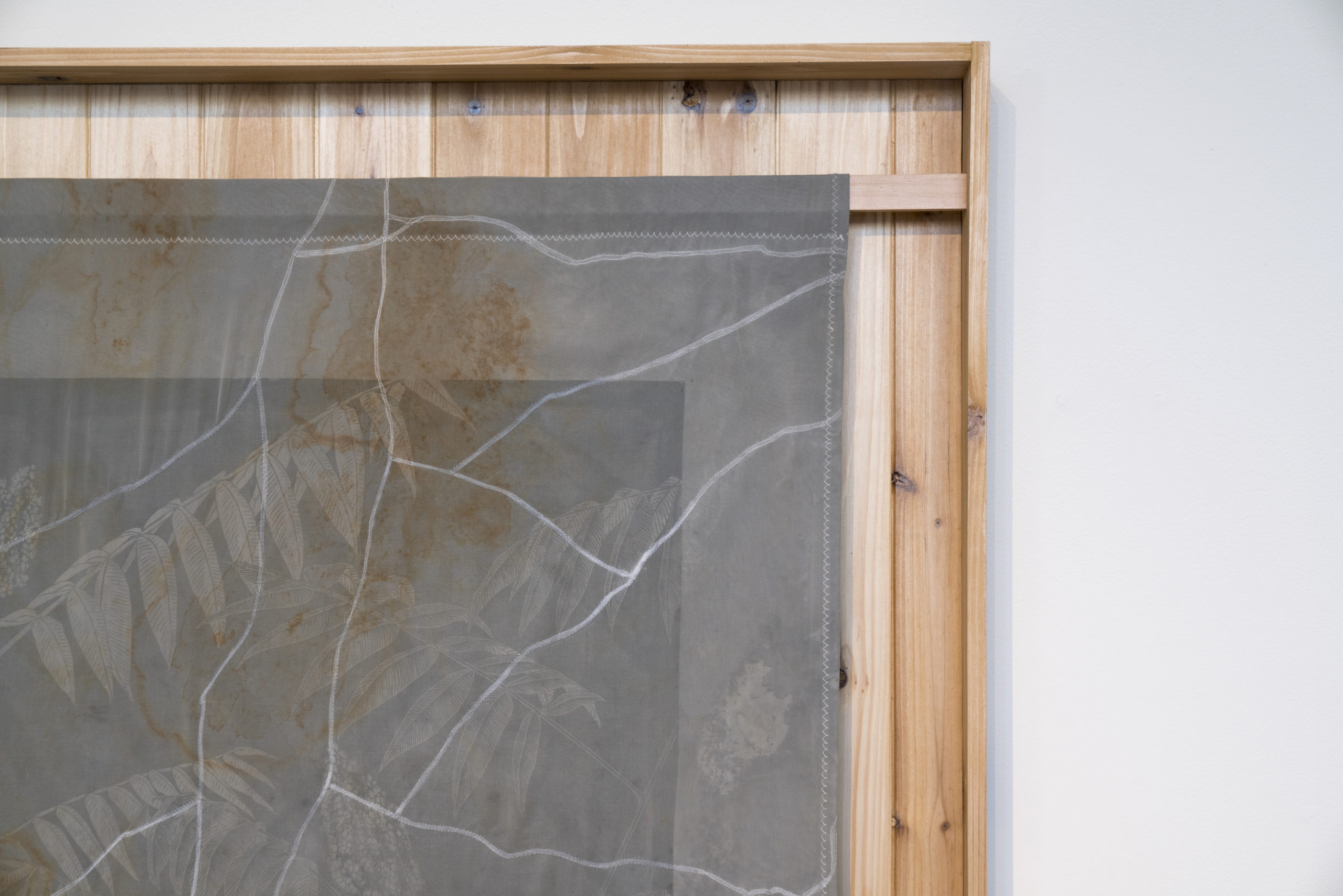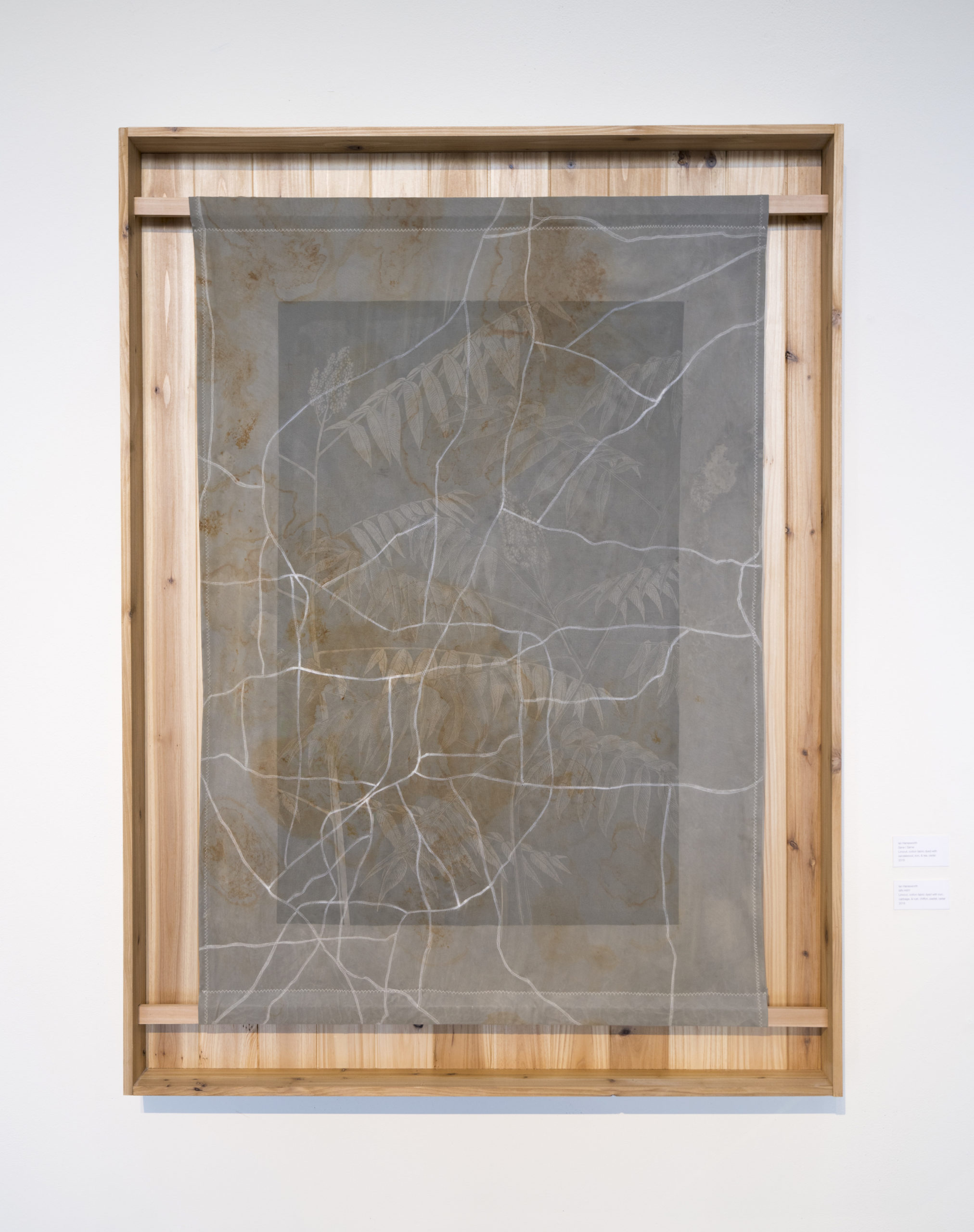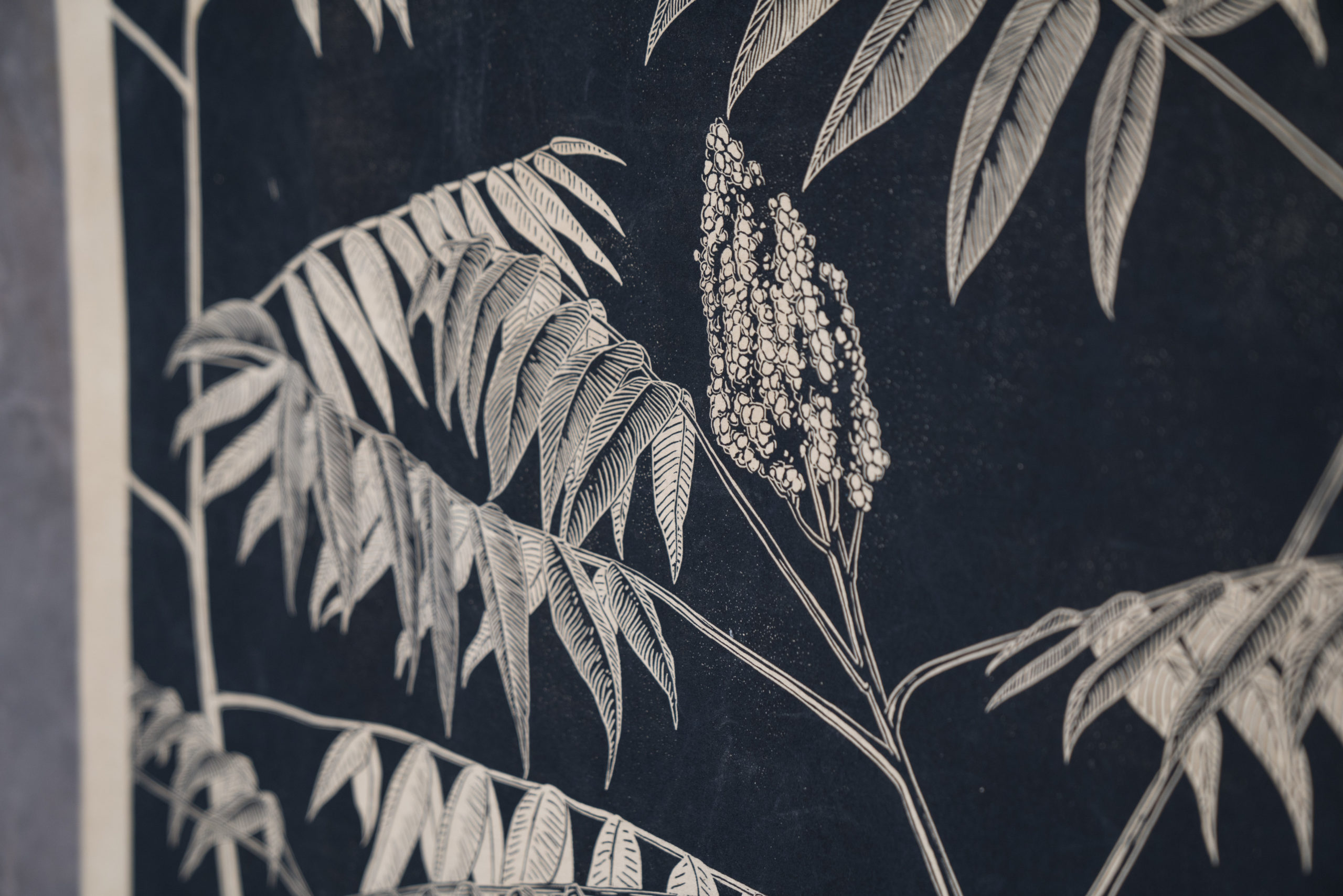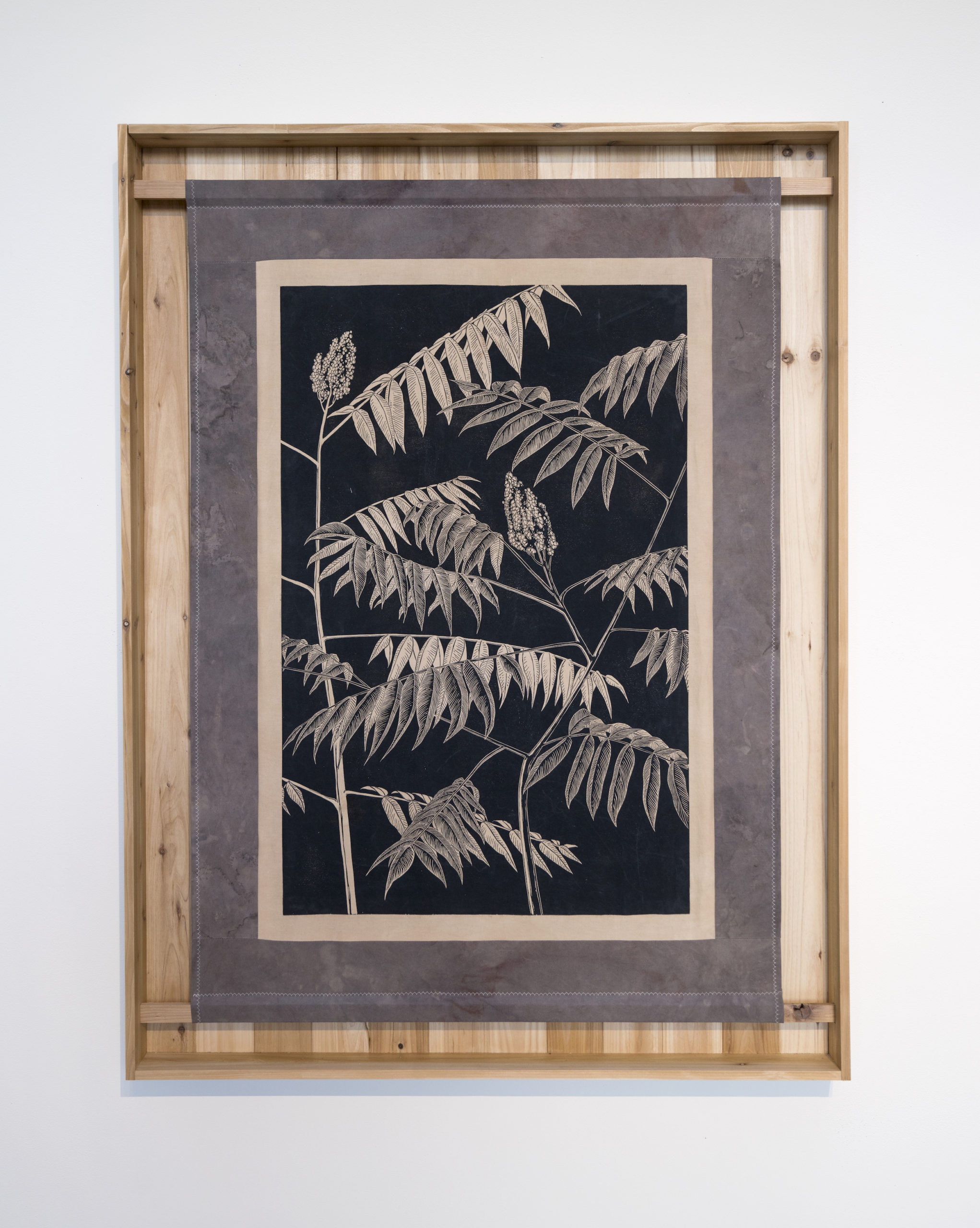The Long Practice of Cumulative Attentiveness
Interdisciplinary artist Ian Hanesworth considers the shifts of attention that arose in the process of their print series on medicinal plants—and how what we notice can become a gesture of reciprocity with the natural world that supports our lives.

I grew up hunting for morel mushrooms in the dark earth of the Driftless Area, a part of the Midwest where glaciers failed to level the hills and valleys of a more ancient landscape. Late spring of every year, my family would hike up the bluff behind our small farm and scour the forest floor for these illusive little mushrooms, sometimes bringing back more than 10 pounds, sometimes returning empty-handed. This yearly tradition cultivated an awareness of seasonal patterns, the succession of species, and the various microclimates present within even a small area of the forest. We became familiar, though far from fluent, with the language of this bluff and the way it expressed favorability or hostility for its multispecies inhabitants. We became attuned to the places in the forest where mushrooms flourished, and painfully aware of the proliferation of the barberry bush, first when it pricked our bare shins, and again when it choked out our favorite mushroom hunting grounds.
In the intensity of my searching for these crinkled fungal forms, I recall how they would appear suddenly behind my eyelids, in my dreams, in the patterns of light and shadow on the back of my hand. I started seeing morels everywhere. This common phenomenon, a combination of confirmation bias, selective attention, and the human brain’s remarkable proclivity for pattern recognition, simultaneously expands and narrows our perspective. It allows human beings to pursue the object of desire with heightened attention, which sometimes includes seeing it where it isn’t.

In beginning a new body of work centering around native medicinal plants, I began to see wild medicines everywhere, and I recalled the perceptive phenomenon I experienced while mushroom hunting as a child in rural Minnesota. In this case, however, I wasn’t just imagining medicinal plants, I was discovering their living vibrancy all around me. The cityscape of Minneapolis, where I live now, hosts a wider array of wild foods and medicines than I anticipated. The untended yard outside my basement apartment was full of sunchokes. The edges of the urban farm where I worked were stocked with a remedial assortment of nettles, cleavers, and anise hyssop. The neighbor’s boulevard boasted a bouquet of echinacea. Most remarkably, I became aware of the presence of wild foods and medicines along the highways and interstates encircling and bisecting the Twin Cities.
This space, belonging neither to the cityscape or the highway, commands little attention as we speed past it. I am grateful, in some backward kind of way, for the unending construction traffic on I-35 last summer, which gave me enough pause to actually notice the plants growing along the roadsides, in the medians, and on heaps of construction rubble. It is easy to appreciate the green spaces of community gardens and city parks, and it is just as easy to overlook the resilient species that take root along our busiest transit corridors.

Road systems stretch across the entire continent, serving to facilitate connection between humans while often severing the connections between other species and ecosystems. Roads effectively fragment the landscape into smaller, more isolated areas. Mesh size –the terminology used by road ecologists to describe the network of roadways as it is distributed across the landscape –prompts images of a vast net being laid across the continent.
My medicinal herb series examines native medicines through the mediums of relief printmaking and natural dyeing. An eventual suite of seven large-scale renderings, these prints will be assembled into large fabric panels for an exhibition at Silverwood Park in 2020. In careful rendering of medicinal plants with an emphasis on detail and craft, I consider attention as a form of gratitude – a gesture of reciprocity with the natural world that supports our lives. The first print of the series is a rendering of Staghorn sumac, a native plant with velvety red berries attributed with a variety of medicinal properties. Sumac is often found in the transitional space between ecosystems –called ecotones –and along forest and prairie edges. It’s a prolific and resilient plant that grows in conditions where many other species cannot. The roadside could be considered a sort of ecotone – a transitional space between the highway and the larger landscape, a margin between territories. As such, sumac grows inexhaustibly along the roadways in Minnesota. Their leaves turn deep red in the fall, veins of color that crisscross the city. Focusing my attention on a single species at a time, this series has affected my perception much in the same way that mushroom hunting did as a child. At first, there is a heavy filter on my gaze, seeking only sumac, but as the series expands to include goldenrod, jewelweed, and other native medicines, my vision expands to see a whole suite of medicinal plants and to perceive the unwavering vitality of marginal ecosystems. Through this work, I am attuning my awareness to the nuances of my urban environment and its vibrant multispecies communities.

In his book Totem Salmon, author Freeman House addresses the importance of the “long practice of cumulative attentiveness”. This idea suggests a sort of endurance, a persistent attentiveness that builds off of itself, season after season. The word “practice” maintains that at its essence, this is an ongoing process with no end goal other than the continued perceptiveness of our more-than-human world. When human beings enter into close and intentional relationships with our environment, as with mushroom gathering or artistic investigations, we can partake in and contribute to this long practice of cumulative attentiveness. These practices, and the mindsets they cultivate, make space within our fast-paced and ceaselessly moving world to lay the groundwork for an equitable and reciprocal relationship with the living earth.
This article is part of the series Seeing Plants: Vision and Botany in Contemporary Art, guest edited by Regan Golden.